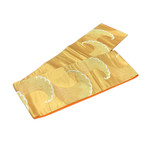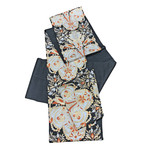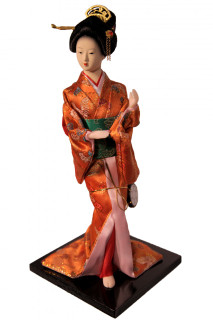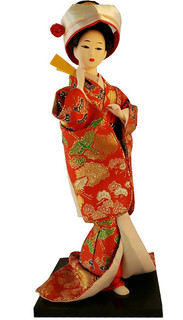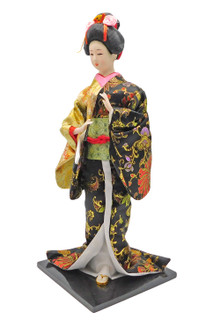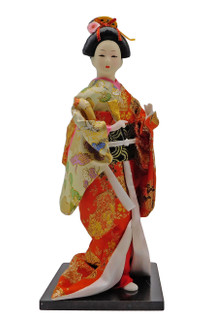- Home
- Furniture
- Furniture Collections
- Vintage Chinese Antiques
- Vintage Kimono Obi
Kimono obi is a sash for traditional Japanese dress, they can also be seen as decorative wall hangings or have their fine material used to make varying accessories. There are many types of kimono obi, most worn by women. A formal kimono obi can cost more than the entire outfit. All embroidery is by hand and the more brocading the more formal the usage. As a fine kimono obi becomes scarce, many of the best obis are considered collector’s items. The most rare and expensive obi is the maru obi. Vintage maru obi is most valuable, as the patina of the gold thread resembles that of an antique tapestry. Newer maru obi, while it is still beautifully designed, does not have the lustre of the older maru obi, perhaps because of the use of synthetic material in combination with silk. In general, the kimono obi used depends on the type of kimono worn in any given occasion. Most formal are the metallic or colour brocade and tapestry, followed by dyed silk, woven silk, and non-silk obi fabrics. The high quality brocade produced by the Nishijin artisans is known as ‘nishiki’, which literally means ‘beautiful colour combination’. Nishiki is characterized by the lavish use of gold and silver threads to make patterns of flowers, birds and traditional geometric designs. Another style of kimono obi produced in Nishijin is ‘tsuzure’ or tapestry. Both brocade and tapestry obis are the most ornate and expensive of all obis.
- Hand made
- Silk with silk embroidery
- Vintage almost 50-80 years
- Ship fully insured, expertly packed
- Size 156" x 12" W





